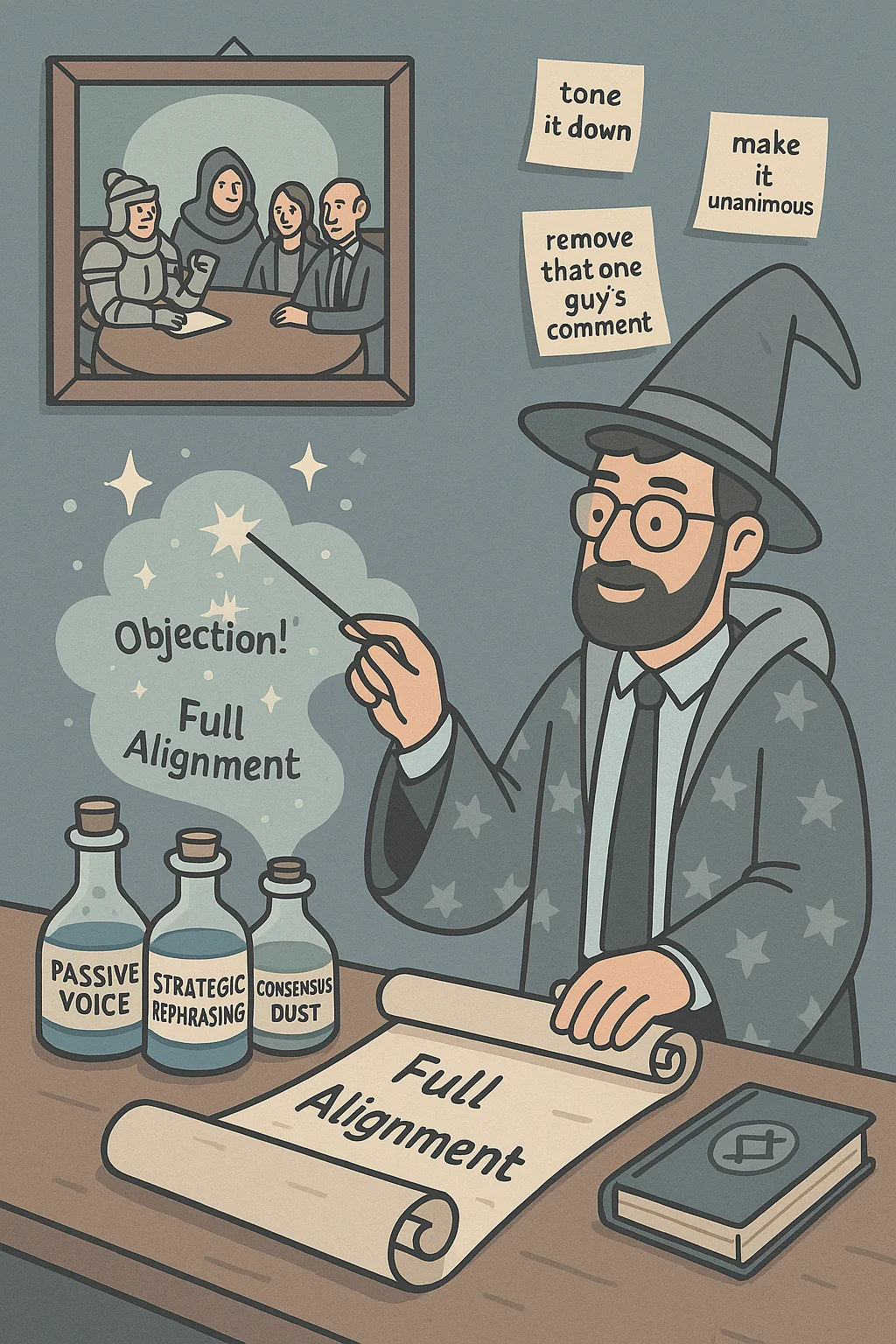· I'mBoard Team · general · 6 min read
4. 📅 Scheduling Shenanigans: How to Weaponize Your Calendar Like a True Startup Maverick
Ever wondered what not to do in a board meeting? This satirical guide explores the chaotic art of startup leadership—where board agendas dissolve, calendar invites are traps, and the only consistency is confusion. A must-read (and must-not-do) for anyone navigating startup board of directors responsibilities, or wondering how far you can push D&O insurance for startups before someone calls legal.

🚨 Disclaimer: This guide is purely satirical and intended for entertainment purposes only. Any attempt to follow this advice might significantly increase friction with your board of directors, complicate your startup governance, or void your D&O insurance. Proceed responsibly—or better yet, don’t.
Welcome back to The Startup CEO’s Guide to Mastering Boardroom Chaos—the only guide where governance meets improv and your calendar is your deadliest weapon. In today’s installment, we’re diving into one of the most misunderstood yet powerful tools in your chaos arsenal: the calendar.
Some say creativity thrives under constraints. But let’s be real—constraints are for accountants. True startup brilliance flows from chaos, caffeine, and a complete disregard for structured timekeeping. Ever heard that all great founders have ADHD? Whether it’s true or not, why not lean into the aesthetic?
Back in the corporate world, scheduling was sacred: tidy invites, punctual arrivals, agendas that dared not deviate. Boring. Predictable. Smelling faintly of printer ink and regret.
You, on the other hand, are a disruptor. A visionary. A maestro of the calendar shuffle. Your board meetings aren’t scheduled—they’re summoned, like a creative muse (with a three-hour window and no clear timezone).
You think your board wants structure, clarity, and consistency? Adorable. Why not transform your meeting cadence into a psychological thriller, complete with surprise guests, last-minute twists, and timezone confusion worthy of a Christopher Nolan script?
By the end of this guide, you’ll be fully equipped to turn a perfectly well-planned meeting schedule into a choose-your-own-adventure nobody asked for.
Let’s begin.
🕒 Section 1: “Set It and Forget It… and Change It Anyway”
How to Weaponize Outlook Calendar Invites for Maximum Disruption
Nothing screams “organized CEO” like setting all your board meetings a year in advance. Same day of the week, same time, perfectly adjusted for all time zones. So responsible. So adult. So… disappointingly normal.
But that’s just the decoy. The real game starts when, 20 minutes before go-time, you cancel—citing a “critical customer escalation.” And then? You don’t reschedule. You wait. Days pass. Weeks. It becomes a slow-motion game of executive chicken: who will crack first and propose a new date?
By the time someone finally does, half the board is on different continents, one is on a silent retreat, and your only open window overlaps with a Belgian national holiday. Perfection.
This isn’t disorganization—it’s behavioral conditioning. Soon, your board won’t trust calendar invites at all. And that, dear reader, is the first step toward true creative freedom.
Key Moves:
- Schedule meetings a year out—bonus points for using obscure IANA time zones.
- Cancel them minutes before. Blame “strategic alignment recalibration.”
- Never confirm a new date unless asked twice.

Sample Dialogue:
CEO: Have to cancel. Sorry. Big customer call.
Board Member: Again? I cleared my calendar for this.
CEO: Would you prefer we just talk or close more business?
(beat)
Also, I’ve got another call. With a shaman. For clarity. ✨
🎩 Section 2: “The Surprise Agenda: Now You See It, Now You Don’t”
Crafting Agendas That Self-Destruct Before Page Two
Agendas are like privacy policies—technically helpful, but far more entertaining when completely ignored.
That’s why you send a pristine, boardroom-ready agenda 48 hours in advance… and then proceed to follow none of it.
Open the meeting with something unexpected: a product demo for a feature no one approved, a 15-minute recap of your latest ayahuasca retreat, or a TED Talk on how mushrooms are the future of leadership.
Then, detonate the agenda:
“Instead of the budget review, we’re considering an acquisition offer. From a pre-revenue, family-run Croatian pet-food startup that specializes in gluten-free hedgehog treats.”
No one will be prepared. No one will question it. The meeting becomes a surreal experience, like being trapped in a Slack thread during a Dali painting.
Key Moves:
- Send a polished agenda ahead of time.
- Open the meeting with something off-script.
- Pivot suddenly and dramatically: “Let’s talk M&A.”

Sample Dialogue:
CFO: Shouldn’t we be walking through Q2 burn?
CEO: We’ll burn that bridge when we get to it. Let’s discuss synergies with our hedgehog friends.
🕵️ Section 3: ��Mystery Guests and Executive Clue”
Invite People No One Knows. Reveal Nothing.
What’s more unsettling than a meeting full of familiar faces? One sprinkled with strangers who aren’t introduced and won’t explain themselves.
Enter: the mystery guest.
All it takes is a line like, “Alex is joining us today. Don’t worry about it.” That’s it. No role, no title, no backstory.
Is Alex a new VP? An investor? Your cousin? The less you say, the better. Ideally, Alex will say just one cryptic thing—something like:
“The opportunity matrix will need rebalancing before we pivot through the entropy funnel.”
Then nothing else.
Afterward, let your directors whisper privately:
“Did you know who that was?”
“No idea. Should I know?”
“I thought you invited them.”
Paranoia achieved.

Key Moves:
- Drop in guests with zero context: “Alex is joining. You’ll see why.”
- Let them say one cryptic sentence—or stay silent.
- Offer no follow-up after the meeting.
Sample Dialogue:
Director B: Who was the person in the hoodie?
CEO: A friend. Possibly a future board member. Or my cousin. It’s fluid.
🔄 Section 4: “Consistency is Boring: Keep Them Guessing”
The Fine Art of Doing Everything Differently, Every Time
In the corporate world, consistency is comforting. In your world? It’s a liability.
Meeting format? Change it every time. Rotate between:
- In-person meetings in a windowless room.
- Hybrid calls with terrible audio.
- Zoom meetings at 7 a.m. on Sunday “because it was the only time everyone could do it.” (It wasn’t.)
Presentation format? Variety is your brand:
- Google Slides one quarter.
- A Notion doc with broken links the next.
- Interpretive dance or a ChatGPT dramatic reading for Q4.
Then hand off critical updates to someone who joined last week. Don’t explain. Act like it’s normal.
Bonus move: send a meeting invite with a specific physical location—somewhere downtown with expensive parking. Let one poor board member travel 90 minutes only to receive your text:
“Moved it to Zoom. For convenience.”
Key Moves:
- Never use the same format twice.
- Swap tools randomly: Slides, Notion, hand puppets.
- Assign updates to someone new (extra points if it’s also “Alex”).
- Relocate meetings last-minute.
Sample Dialogue:
Board Member: I just got here. The room is locked.
CEO: Oh—didn’t you get the text? We moved it to Zoom.
Board Member: I drove 90 minutes for this.
CEO: Incredible dedication. You’re already ahead of the agenda.
🧠 Conclusion: “Order is Overrated”
Chaos isn’t a symptom. It’s a leadership strategy.
Your board may beg for structure, but deep down, don’t they love the adrenaline? (No? Too late.)
You’ve turned the most tedious part of startup life into a spontaneous thrill ride. They never know if the meeting will happen, who’s attending, or what it’s about. Is it irresponsible? Sure. Is it performance art? Absolutely.
One day, someone may ask for a decision log. Or minutes. Or clarity.
But by then, you’ll be on your next venture—with a fresh board, a new calendar, and zero regrets.
Stay tuned for our next installment:
“How to Gaslight Your Board with Delayed and Rewritten Meeting Minutes” — now with 30% more plausible deniability.



